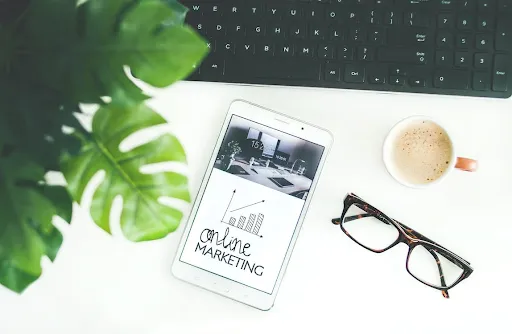The path potential consumers follow to become devoted clients is represented by the acquisition funnel. Companies may successfully attract, engage, and keep their target audience by carefully strategizing the optimization of each stage of the funnel. In this post, we’ll examine the four essential stages of user acquisition funnel marketing and offer insightful tips to help you get the most out of your promotional efforts.
Table of Contents
What is Acquisition Funnel Marketing?
Acquisition funnel marketing, also known as the marketing or sales funnel, is a conceptual framework that maps out the customer journey from the initial point of contact to making a purchase or taking a desired action. It visualizes the process of turning potential customers into loyal advocates and helps businesses identify areas for improvement in their marketing strategies. The funnel is divided into stages that represent different levels of engagement and conversion, allowing marketers to track and optimize their efforts at each step.
Why is User Acquisition Funnel Marketing Important?
Strategic Focus
Companies can more intelligently focus their resources and efforts by understanding the various stages of the acquisition funnel. Instead of applying general marketing techniques, they can adjust their plans to fit specific funnel stages, increasing conversions and ROI.
Targeted Audience Engagement
The acquisition funnel helps in the identification and targeting of specific audience segments at various points along the customer journey. You can forge deeper connections with prospective clients and boost conversion rates after providing personalized and pertinent content.
Conversion Optimization
The funnel allows businesses to identify bottlenecks and areas of improvement in their conversion process. Marketers may improve their messaging, user experience, and marketing strategies to improve conversion rates and increase sales through researching the data and insights at each stage.
Customer Lifetime Value
An effective acquisition funnel includes steps after the initial purchase. Businesses may boost customer lifetime value and develop enduring relationships with their audience by concentrating on customer retention and loyalty in the later phases of the funnel. Repeat business, favorable word-of-mouth, and long-term growth are the results of this.
Four Key Phases of User Acquisition Funnel Marketing
Phase 1: Awareness
The first phase of the user acquisition funnel is all about creating awareness for your product or service. At this stage, your goal is to capture the attention of potential customers and introduce them to your brand. Key tactics to consider during the awareness phase include:
- Content marketing. Developing compelling and relevant content is crucial to grab the attention of your target audience. Create blog posts, videos, infographics, or social media content to showcase your expertise and offer value to potential customers.
- Search Engine Optimization (SEO). Implementing effective SEO strategies helps increase your online visibility. Optimize your website with relevant keywords, meta tags, and high-quality backlinks so you can improve your organic search rankings and drive more traffic to your site.
Phase 2: Interest
Once you have successfully generated awareness, the next phase focuses on nurturing the interest of your potential customers. In this phase, you want to provide valuable information and build credibility to convince them to take the next step. Here are some techniques to consider:
- Email marketing. Leveraging email campaigns allows you to stay connected with your audience. Provide informative newsletters, exclusive offers, and personalized recommendations to keep them engaged and interested in your brand.
- Social media engagement. Actively participating in social media platforms enables you to interact with your audience directly. Respond to comments, initiate conversations, and share relevant content to foster a sense of community and build trust with potential customers.
Phase 3: Conversion
The conversion phase is where your efforts to convert interested prospects into paying customers come into play. This phase involves strategic tactics aimed at convincing potential customers to make a purchase or take a specific action. Consider the following strategies:
- Landing page optimization. Ensure that your landing pages are optimized for conversions. Use clear and compelling calls-to-action (CTAs), persuasive copy, and minimal form fields to make it easy for users to convert.
- Remarketing. Implementing remarketing campaigns allows you to target users who have previously shown interest in your brand. By displaying relevant ads across various platforms, you can remind them of their initial interest and encourage them to return to your website.
Phase 4: Retention
While acquiring new customers is important, retaining existing ones is equally vital for long-term business success. The retention phase focuses on cultivating customer loyalty and maximizing customer lifetime value. Here are two key tactics for customer retention:
- Personalization. Individualized email campaigns, product recommendations, and exclusive offers based on their preferences can significantly enhance the customer experience and encourage loyalty.
- Customer support and engagement. Invest in exceptional customer support to address any concerns or issues promptly. Engage with customers through social media, live chat, or community forums to build relationships and demonstrate that their satisfaction is a top priority.
Customer Acquisition Strategies to Kickstart Your Sales Funnels
- Targeted outreach. Your sales team can build personalized and targeted connections, raising the likelihood of engagement and conversion, doing thorough research, using resources like LinkedIn or industry-specific databases, and creating connections.
- Referral programs. Implement referral programs to leverage the power of word-of-mouth marketing. By providing rewards or incentives, you can persuade pleased consumers to tell their friends and family about your goods or services. This not only brings in new leads but also establishes trust and credibility, as recommendations from existing customers are highly influential.
- Strategic partnerships. Explore collaborations with complementary businesses or influencers in your industry to tap into their existing customer base and expand your reach. Co-marketing campaigns, joint webinars, guest blogging, or cross-promotions, creating win-win situations for both parties involved will help to achieve that.
- Content optimization. Ensure that your website and content are optimized to capture and convert leads. Create landing pages with compelling offers and lead capture forms, and optimize your website for search engines to attract organic traffic. Develop high-quality, informative content such as blog posts, whitepapers, or case studies to establish thought leadership and engage potential customers.

- Social media advertising. To promote your goods or services to users who fit your ideal consumer profile, spend money on targeted advertising campaigns on websites like Facebook, Instagram, or LinkedIn. Use engaging graphics, persuading text, and obvious CTAs to encourage interaction and lead people toward your sales funnel.
Conclusion
You may streamline your marketing efforts and promote long-term business growth by comprehending and improving each stage of the user acquisition funnel. Keep in mind that user acquisition is a continuous process that calls for continued monitoring, testing, and optimization. Use the power of data-driven insights and advanced marketing strategies to attract, engage and retain your target audience.


